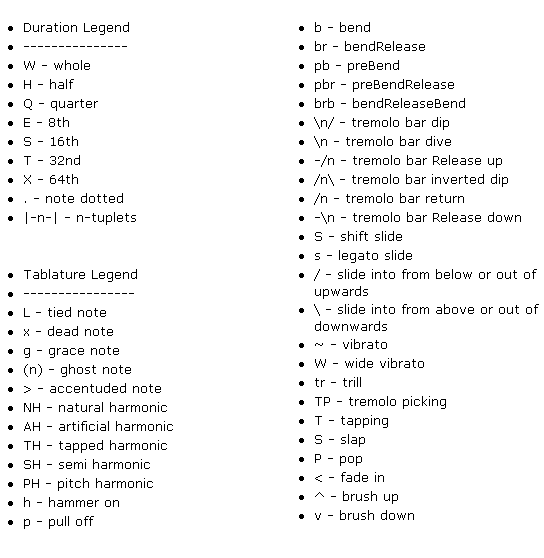I'm writing a quick front end to display guitar tablature. The front end is in Flash but I want to store the tab in some human-readable format. Anyone know of something that already exists? Any suggestions on how to go about it? One idea I got from reading some stackoverflow posts was to use a strict ASCII tab format like so:
e||-1------3--------------0--|----2-------0---
B||--1-----3------------1----|----3-------0---
G||---2----0----------0------|----2-------1---
D||----3---0--------2--------|----0-------2---
A||----3---2------3----------|------------2---
E||----1---3----3------------|------------0---
It has advantages. I can gain a lot of info from the structure (how many strings, their tunings, the relative placement of notes) but it is a bit verbose. I'm guessing the '-'s will compress away pretty well when sent over the wire.
If anyone knows of an existing data-format for describing guitar tab I'll take a look as well.
edit:
I should note that this format is 90% for me and may not ever been seen by anyone other than myself. I want an easy way to write tab files that will be displayed eventually as graphics in a Flash front-end and I don't want to have to write an editor front end.

